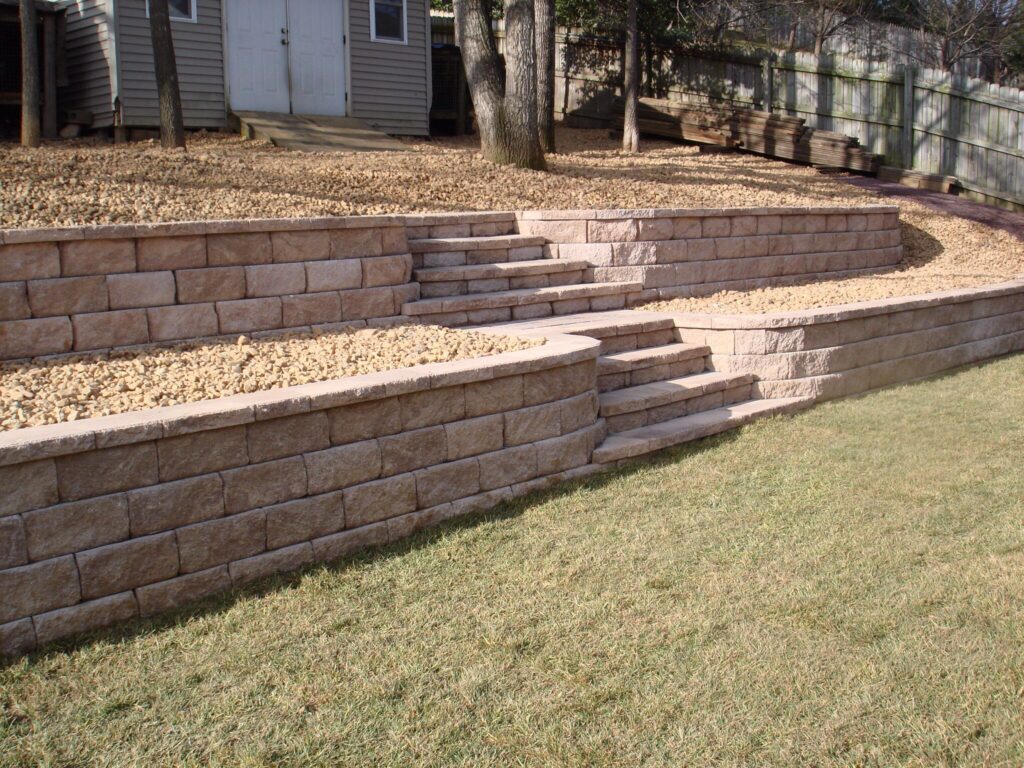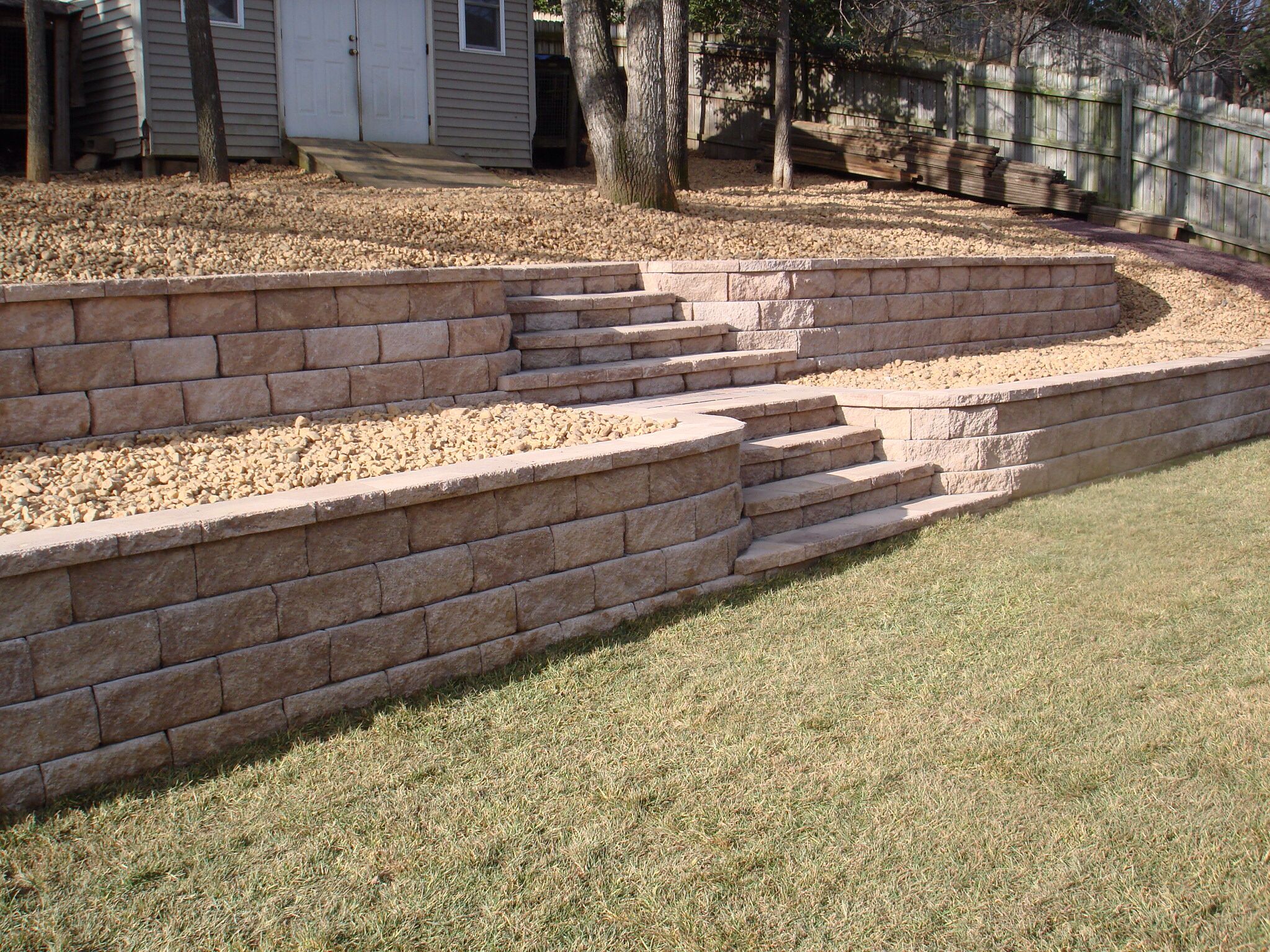
Mastering Sloped Yard Landscaping: Solutions for Beauty and Function
Sloped yards present unique challenges and opportunities for homeowners. While a flat yard might seem easier to manage, a well-designed sloped yard can be a stunning landscape feature. Sloped yard landscaping requires careful planning and execution, but the results – improved drainage, reduced erosion, and enhanced aesthetic appeal – are well worth the effort. This article explores various sloped yard landscaping techniques, offering practical solutions and inspiring ideas to transform your hillside into a beautiful and functional outdoor space.
Understanding the Challenges and Benefits of Sloped Yards
Before diving into design ideas, it’s crucial to understand the specific challenges posed by a sloped yard. Erosion is a primary concern, as rainwater runoff can wash away topsoil and create unsightly gullies. Maintaining a sloped yard can also be physically demanding, making mowing and gardening more difficult. However, with proper planning, these challenges can be mitigated, and the inherent benefits of a sloped yard can be maximized.
One of the key advantages of sloped yard landscaping is improved drainage. When properly designed, a sloped yard can naturally channel water away from your home’s foundation, preventing water damage. Slopes also offer opportunities for creating visually interesting features, such as terraced gardens, cascading waterfalls, and winding pathways. Furthermore, a well-landscaped slope can increase your property value and create a unique and inviting outdoor living space. [See also: Retaining Wall Design Ideas for Sloped Yards]
Essential Techniques for Sloped Yard Landscaping
Terracing: Creating Level Spaces
Terracing is one of the most effective techniques for managing a sloped yard. By creating a series of level platforms, terracing reduces the overall slope, making it easier to maintain and preventing soil erosion. Terraces can be constructed using various materials, including retaining walls, stacked stones, or even wooden timbers. The choice of material will depend on the desired aesthetic, the severity of the slope, and your budget.
When designing terraces, consider the width and depth of each level. Wider terraces are ideal for creating garden beds or outdoor seating areas, while narrower terraces can be used for pathways or decorative plantings. Be sure to incorporate proper drainage into each terrace to prevent water from accumulating and causing erosion. [See also: Building a Retaining Wall: A Step-by-Step Guide]
Retaining Walls: Structural Support and Visual Appeal
Retaining walls are essential for supporting terraced slopes and preventing soil from collapsing. They can be constructed from a variety of materials, including concrete blocks, natural stone, brick, or timber. The type of retaining wall you choose will depend on the height of the slope, the soil type, and your aesthetic preferences.
When building a retaining wall, it’s crucial to ensure proper drainage. Install drainage pipes behind the wall to allow water to escape and prevent hydrostatic pressure from building up, which can cause the wall to fail. Also, consider the visual impact of the retaining wall. Choose materials and designs that complement your home and landscape. A well-designed retaining wall can be a beautiful and functional feature in your sloped yard landscaping.
Ground Cover: Preventing Erosion and Adding Beauty
Ground cover plants are an excellent way to prevent erosion on slopes. These low-growing plants spread quickly, covering the soil and preventing rainwater from washing it away. There are many different types of ground cover plants to choose from, each with its own unique characteristics and benefits. Some popular options include creeping thyme, sedum, vinca minor, and pachysandra.
When selecting ground cover plants, consider the amount of sunlight the slope receives, the soil type, and the desired aesthetic. Choose plants that are well-suited to the growing conditions in your area and that will provide a dense, erosion-resistant cover. Ground cover can also add color and texture to your sloped yard landscaping, creating a visually appealing and low-maintenance solution.
Drainage Solutions: Managing Water Runoff
Proper drainage is essential for preventing erosion and water damage in a sloped yard. There are several drainage solutions you can implement, depending on the severity of the slope and the amount of water runoff. One common solution is to install French drains, which are underground trenches filled with gravel that channel water away from the slope. Another option is to create swales, which are shallow depressions that collect rainwater and allow it to slowly soak into the ground.
In addition to French drains and swales, you can also use rain gardens to manage water runoff. Rain gardens are planted areas that are designed to capture and filter rainwater. They can be planted with a variety of native plants that are adapted to wet conditions. By incorporating these drainage solutions into your sloped yard landscaping, you can effectively manage water runoff and prevent erosion.
Creative Design Ideas for Sloped Yards
Rock Gardens: A Natural and Low-Maintenance Option
Rock gardens are a beautiful and low-maintenance option for sloped yard landscaping. They can be created by incorporating large rocks and boulders into the slope, creating a natural and rugged look. Rock gardens are particularly well-suited to dry climates, as they require minimal watering. They can be planted with a variety of drought-tolerant plants, such as succulents, cacti, and alpine plants.
When designing a rock garden, consider the size and shape of the rocks. Use rocks of varying sizes to create a more natural and visually interesting look. Arrange the rocks in a way that complements the slope and creates pockets for planting. Rock gardens can be a stunning and sustainable addition to your sloped yard landscaping.
Water Features: Adding Tranquility and Beauty
Water features, such as waterfalls and streams, can add tranquility and beauty to a sloped yard. The natural slope provides an ideal setting for creating cascading waterfalls and winding streams. Water features can also help to improve drainage by channeling water away from the slope. They can be constructed from a variety of materials, including natural stone, concrete, and liner materials.
When designing a water feature, consider the size and scale of the slope. A larger slope can accommodate a larger waterfall or stream, while a smaller slope may be better suited to a smaller water feature. Be sure to incorporate proper filtration and circulation to keep the water clean and clear. Water features can transform a sloped yard into a peaceful and inviting oasis.
Pathways and Stairways: Creating Access and Interest
Pathways and stairways are essential for creating access and interest in a sloped yard. They can be constructed from a variety of materials, including gravel, stone, wood, or concrete. The choice of material will depend on the desired aesthetic and the severity of the slope.
When designing pathways and stairways, consider the slope and the surrounding landscape. Create winding pathways that follow the natural contours of the slope. Install handrails for safety, especially on steeper slopes. Pathways and stairways can enhance the functionality and beauty of your sloped yard landscaping.
Plant Selection for Sloped Yards
Choosing the right plants is crucial for successful sloped yard landscaping. Select plants that are well-suited to the growing conditions in your area, including the amount of sunlight, the soil type, and the climate. Also, consider the plant’s ability to tolerate drought and resist erosion. Some excellent plant choices for sloped yards include:
- Ground Cover Plants: Creeping thyme, sedum, vinca minor, pachysandra
- Shrubs: Juniper, potentilla, spirea, dwarf conifers
- Trees: Dogwood, redbud, serviceberry, birch
- Perennials: Daylilies, hostas, coneflowers, black-eyed Susans
By selecting the right plants, you can create a beautiful and sustainable sloped yard that requires minimal maintenance.
Maintenance Tips for Sloped Yard Landscaping
Maintaining a sloped yard requires a bit more effort than maintaining a flat yard. However, with proper planning and execution, you can minimize the amount of maintenance required. Here are some tips for maintaining your sloped yard landscaping:
- Regularly inspect for erosion: Check for signs of erosion, such as gullies or exposed soil. Repair any erosion damage promptly to prevent further problems.
- Mulch regularly: Mulch helps to retain moisture in the soil and prevent erosion. Apply a layer of mulch around plants to keep the soil healthy and prevent weeds from growing.
- Water deeply and less frequently: Water deeply and less frequently to encourage deep root growth. This will help plants to become more drought-tolerant and resistant to erosion.
- Prune regularly: Prune plants regularly to keep them healthy and prevent them from becoming overgrown. This will also help to maintain the desired shape and size of your landscape.
- Fertilize as needed: Fertilize plants as needed to provide them with the nutrients they need to thrive. Use a slow-release fertilizer to avoid burning the plants.
Conclusion
Sloped yard landscaping presents unique challenges and opportunities for homeowners. By understanding the challenges and implementing the right techniques, you can transform your hillside into a beautiful and functional outdoor space. Terracing, retaining walls, ground cover, and drainage solutions are essential for managing erosion and creating a sustainable landscape. With creative design ideas and careful plant selection, you can create a sloped yard that is both visually appealing and environmentally friendly. Remember to maintain your sloped yard landscaping regularly to keep it healthy and beautiful for years to come. Embrace the challenge and unlock the potential of your sloped yard!

